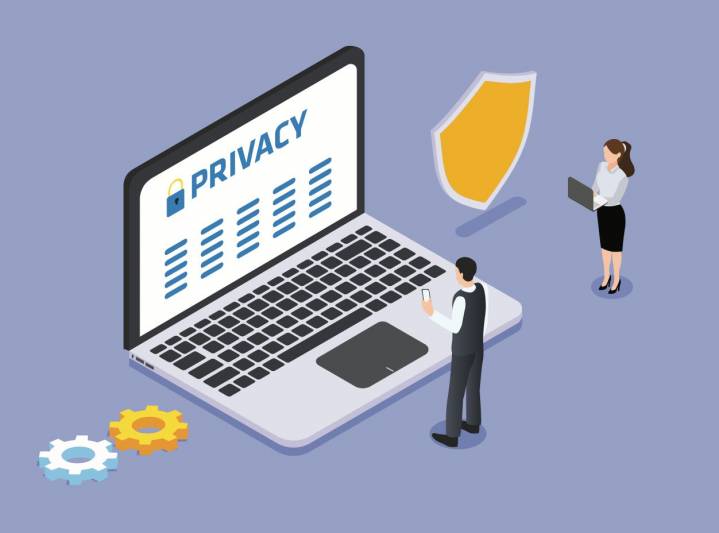



Let’s start by addressing how and why Microsoft collects the data of Windows 10 users. In Microsoft’s Privacy Statement, the company says that some of the data is collected through "your interactions, use, and experiences with our products," but they also "obtain data about you from third parties." Microsoft says they use personal data to provide users with "rich, interactive experiences." This includes using data to personalize products and send targeted advertising to customers.
While it’s not necessarily unusual for major technology companies like Microsoft to collect user data, it’s certainly not ideal from a privacy standpoint. When your private information is stored by a corporation, it only increases the chances of attackers accessing that same information through a data breach. And seeing as data tracking is the default option for Windows 10, it’s important to know how you can start protecting your personal information.
Talking you through all of Windows 10’s privacy settings would take a little too long, so instead we’ll take a look at the ones that are least friendly to your privacy and provide instructions on how to disable those settings. There are so many hidden settings that you could easily spend hours trying to find the right setup for yourself. We recommend getting started by checking the following 5 categories:
Microsoft’s personal productivity assistant is well-known to users concerned about Windows 10’s privacy issues because Cortana collects your personal data and shares it with Microsoft. To make matters worse it’s impossible to fully disable this digital assistant. Making the following adjustments, however, will ensure that Cortana sends as little data as possible back to Microsoft:
Follow these instructions to turn off location tracking completely:
If you want to use the location feature on some apps and not others, then keep location tracking turned on. You can then disable location tracking for individual apps under Choose apps that can use your precise location.
By default, Windows 10 tracks your activities and sends the information to its advertising partners, who can then show you targeted ads. Your personal information is contained within something called an advertising ID – but this can be turned off if you know where to look. Here’s how to do it:
Diagnostic data refers to information that Microsoft collects about your hardware and computer activity. To turn off diagnostic data, follow these instructions:
Applications on Windows 10 may have access to your camera, microphone, location and all kinds of other personal data. By default, apps are given access to everything, but this can be changed in the privacy settings. Here’s how you can find the App permissions:
Now you know how to disable the most important privacy settings on Windows 10. Yet that doesn’t mean it's a good idea to go crazy and switch off everything! If you were to do that, you might be in for some unwelcome surprises. For example, let’s say you switched off App permissions for your camera and microphone. Then next time you have a meeting, you’ll soon realize that nobody can see or hear you!
To avoid this kind of situation, you must think carefully before you disable a particular privacy setting. Some settings may seem preferable to turn off in order to protect your data, but practically speaking it may be a nuisance. Everyone has to decide for themselves what is the best balance between privacy and accessibility.
BCWipe Privacy Guard is a utility that allows you to take control of your Windows 10 privacy in a simple and intuitive way. By bringing together all of Windows 10’s privacy settings in a single interface, BCWipe Privacy Guard allows you to turn off Microsoft’s tracking features in one click, or manually adjust settings to meet your own specifications.
BCWipe Privacy Guard features a convenient option to adopt the settings recommended by Jetico’s team of data protection specialists. These settings have been compiled to find the ideal balance between privacy and software usability. You can activate this on your system at the click of a button.
For BCWipe users, this utility also provides you with tips on how to improve your security with data wiping. To help keep your computer clean and safe, BCWipe Privacy Guard will suggest which files and folders should be wiped with BCWipe.
P.S. Check out these 10 free data privacy tools, to further boost your privacy.

Michael Waksman has been serving as CEO of Jetico since 2011, more than doubling the size of the company during his tenure. He brings more than 20 years of communications, technology and leadership experience.
At Jetico, Waksman has lead creation of the corporate identity, raising global brand awareness, building a more commercially-driven team and initiating enterprise customer relations. Jetico has maintained a wide user base throughout the U.S. Defense community, in the global compliance market and for personal privacy.
Waksman served as vice-chairman of the Cyber Group for the Association of Finnish Defense and Aerospace Industries. Recognized as a security and privacy advocate, he is a frequent speaker at international events, occasionally on behalf of the Finnish cyber security industry. In 2012, Waksman was honored with The Security Network's Chairman's Award for fostering collaboration between the United States and Finland. As dual citizen, he is a native New Yorker and has been living in the Helsinki region for over 15 years.
